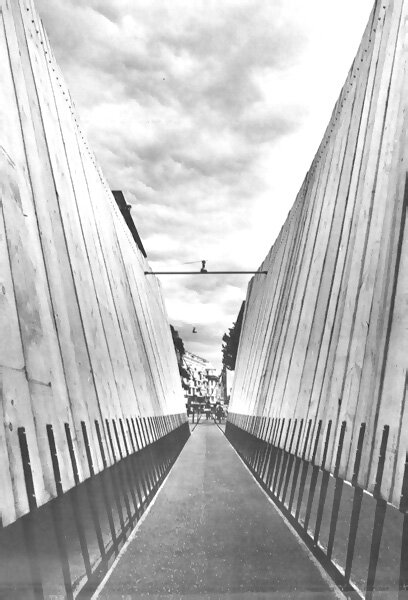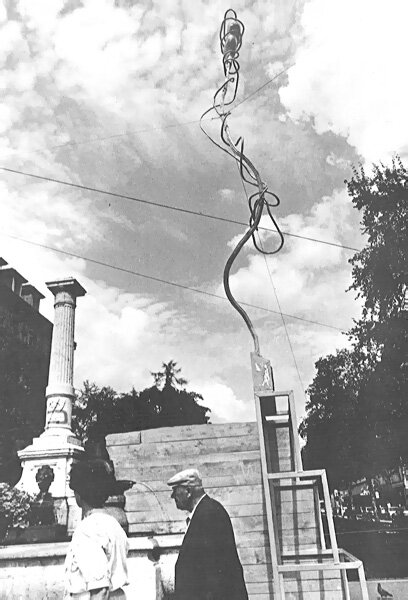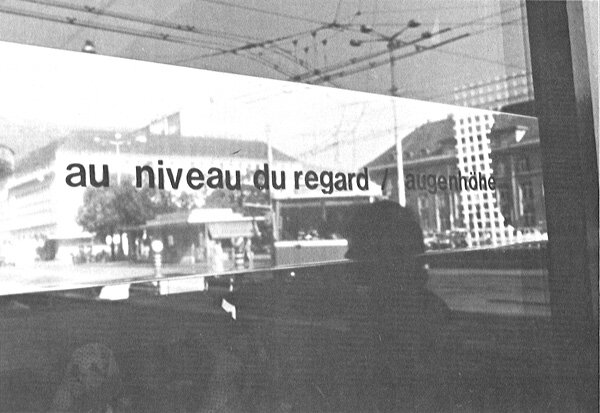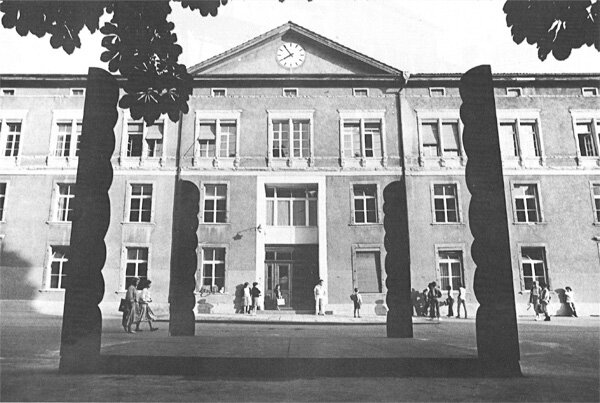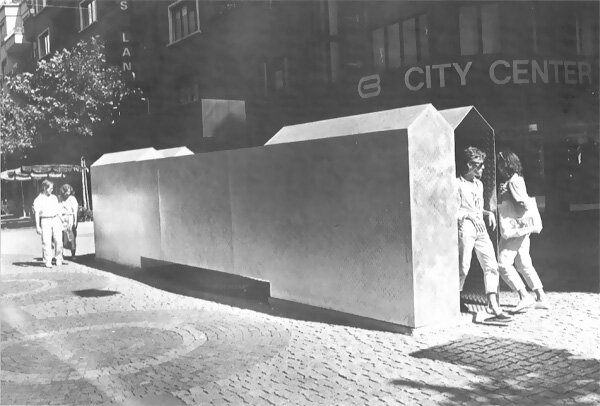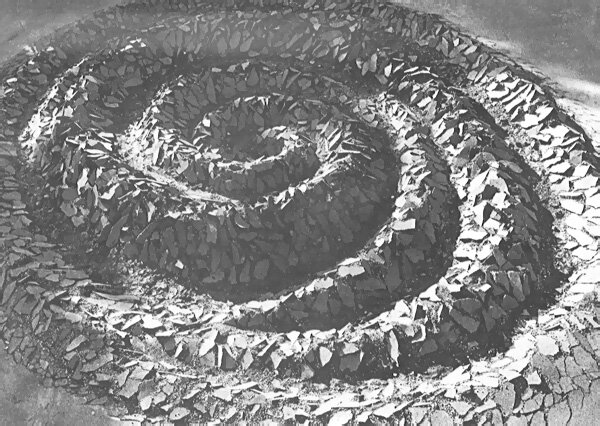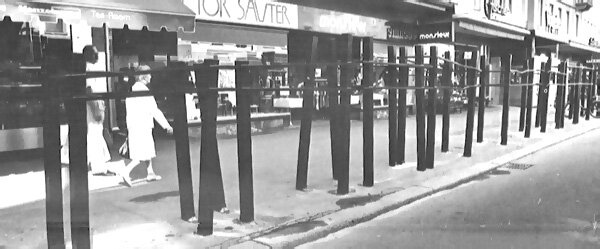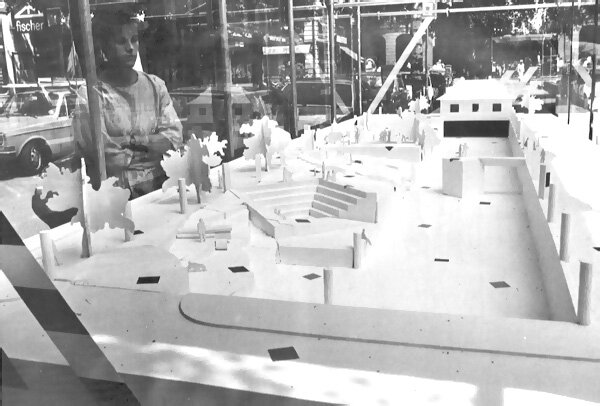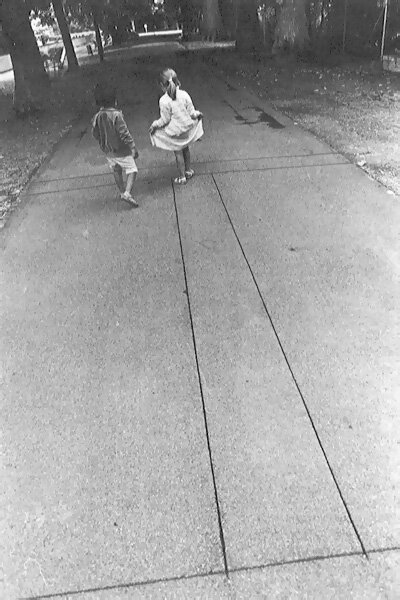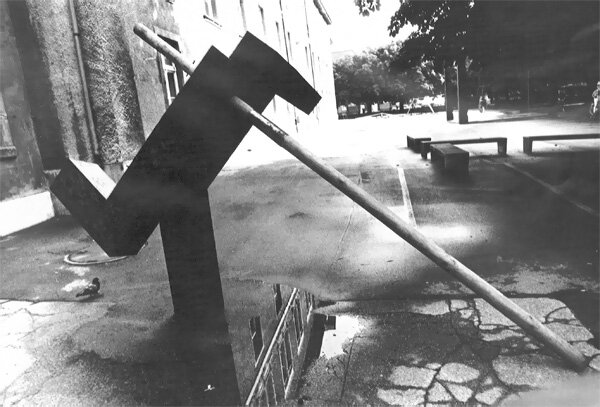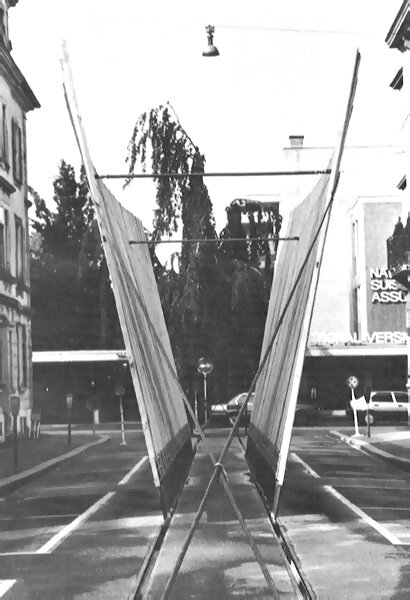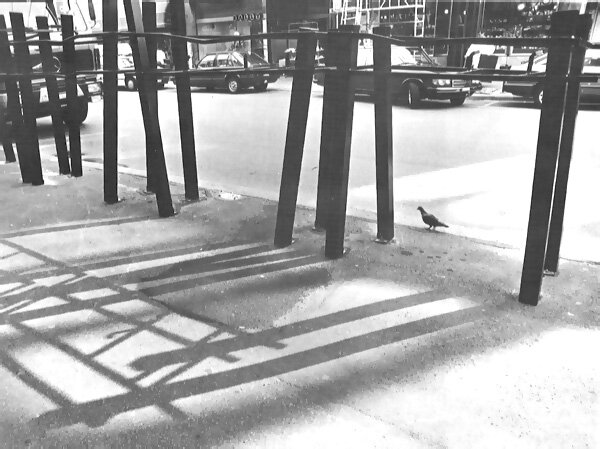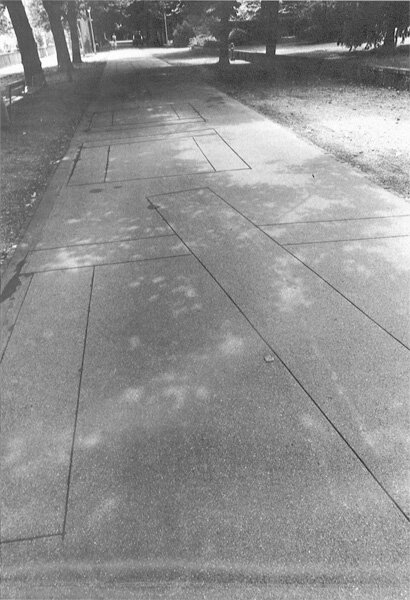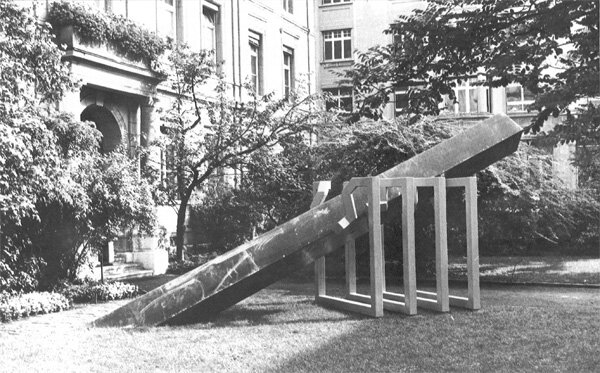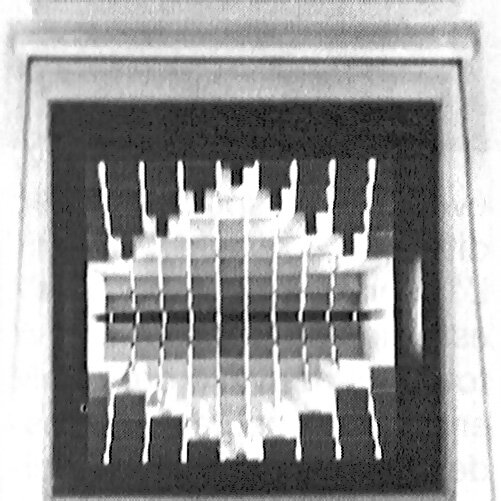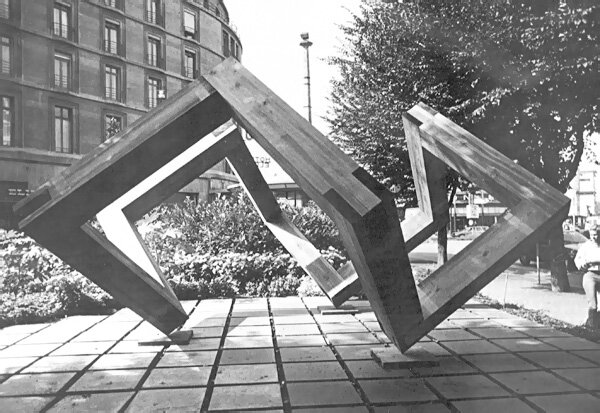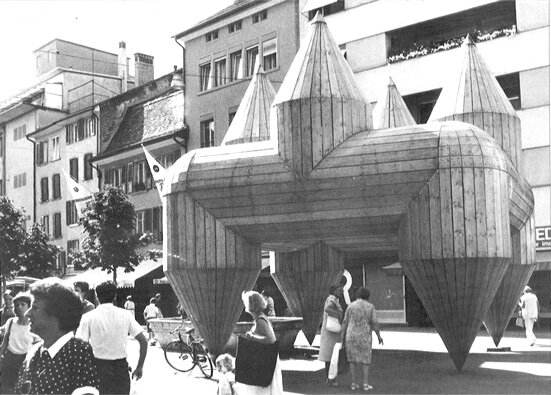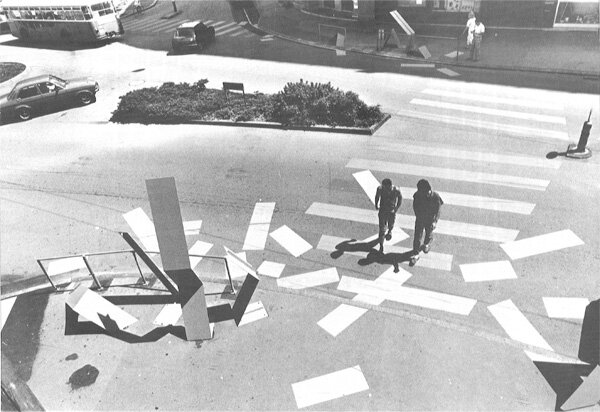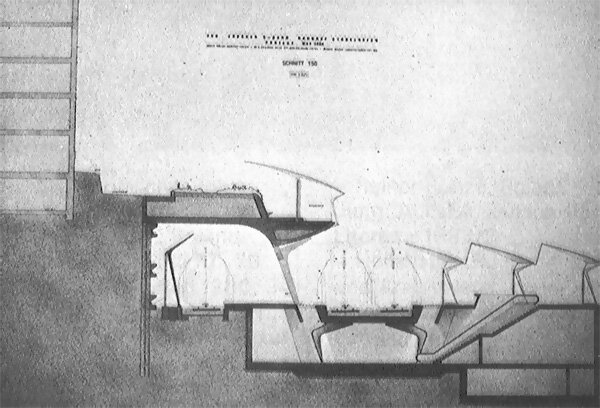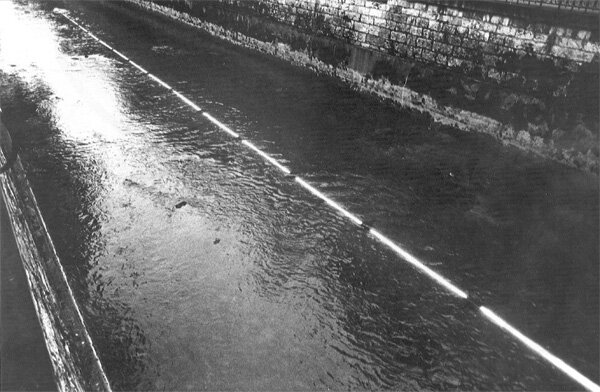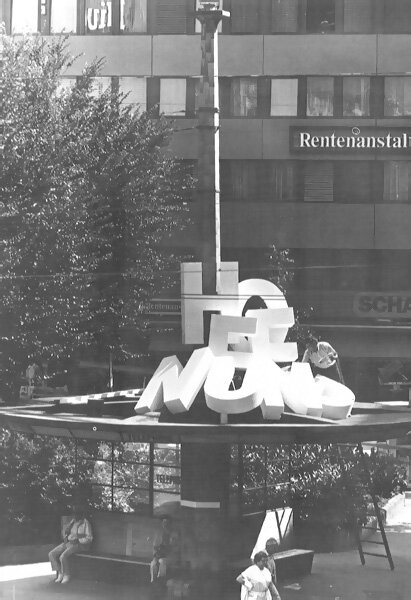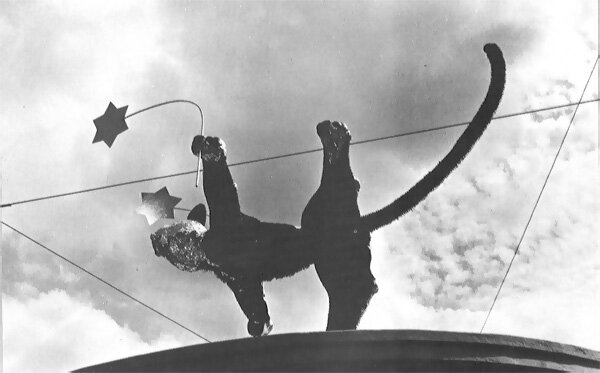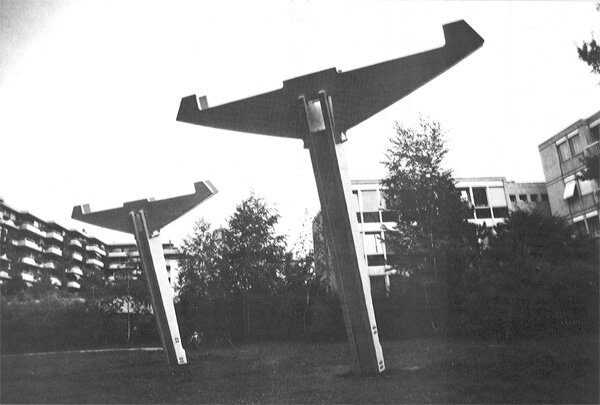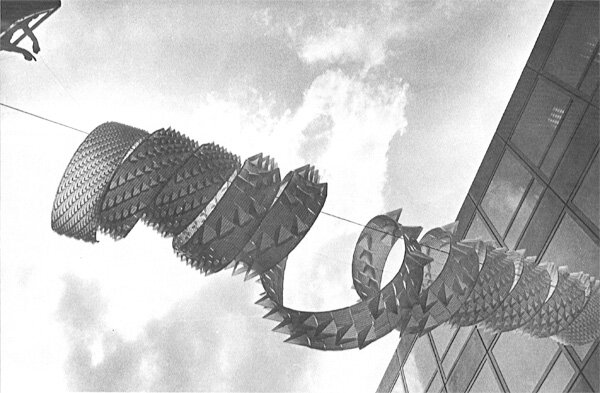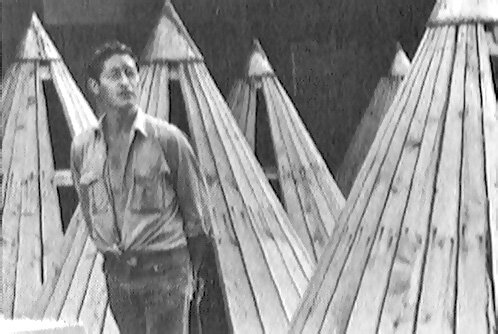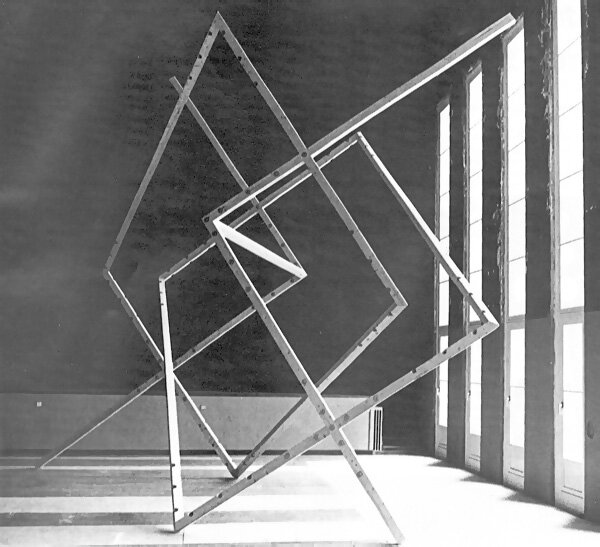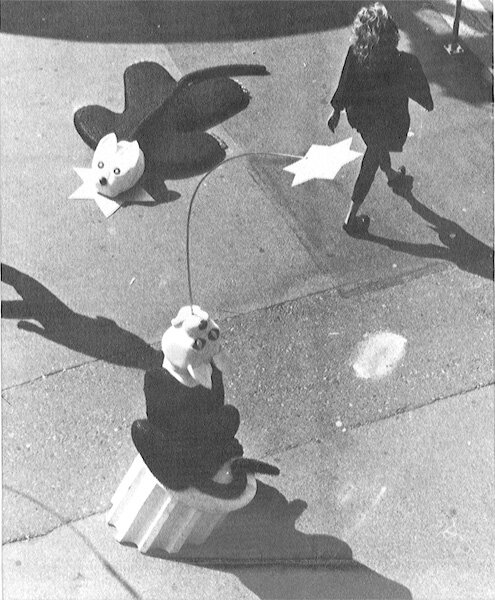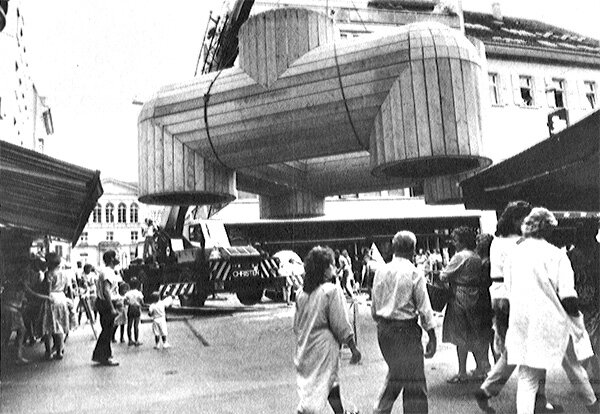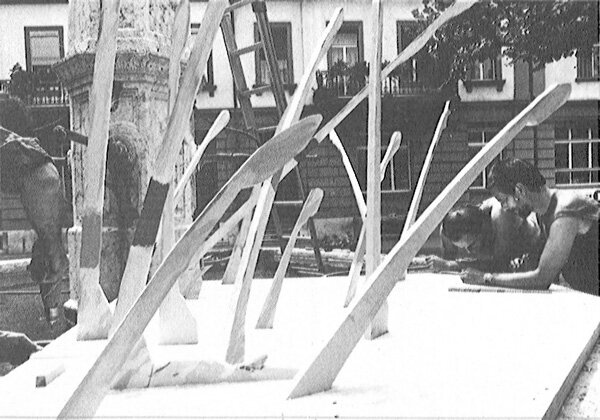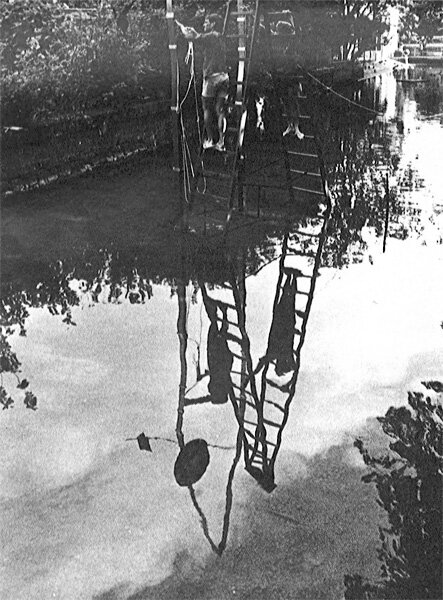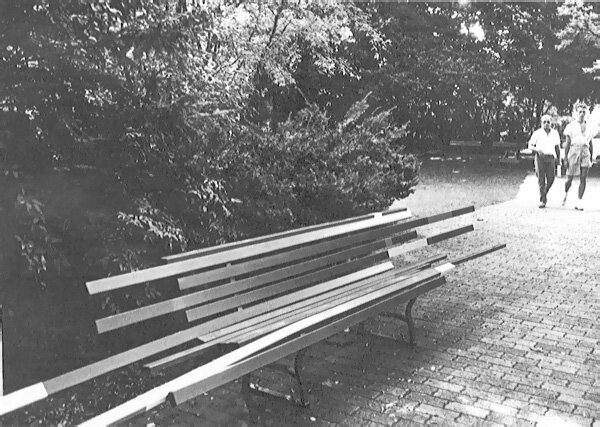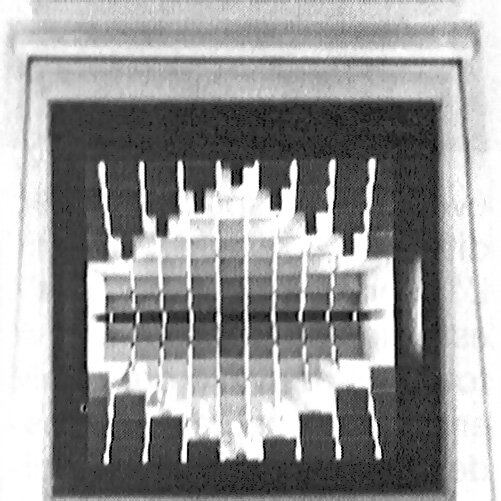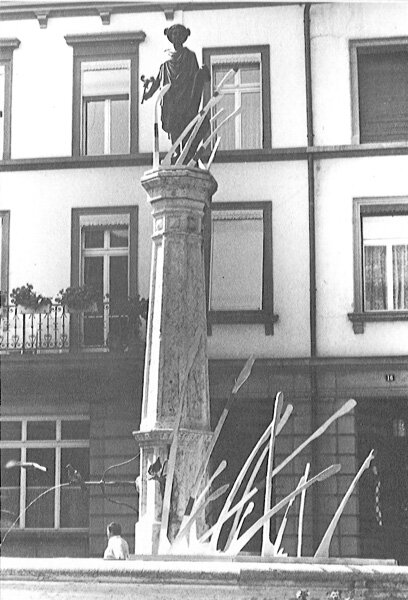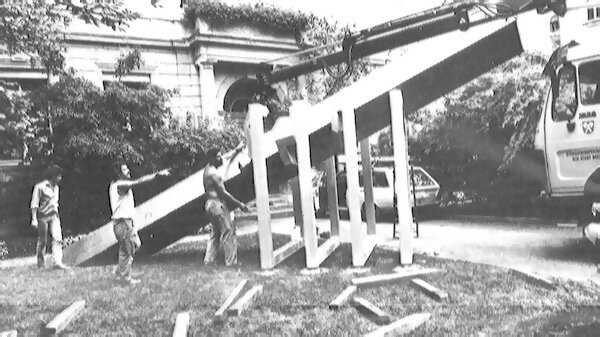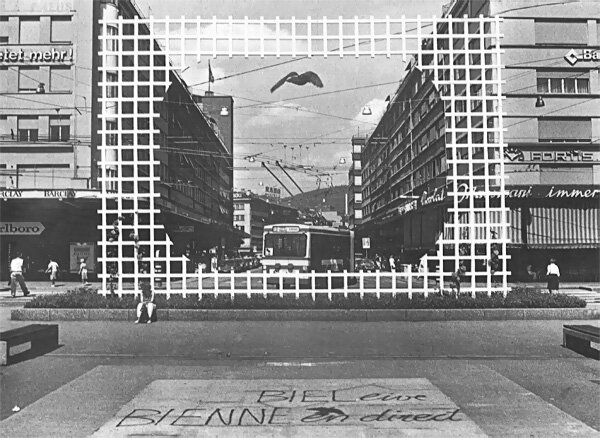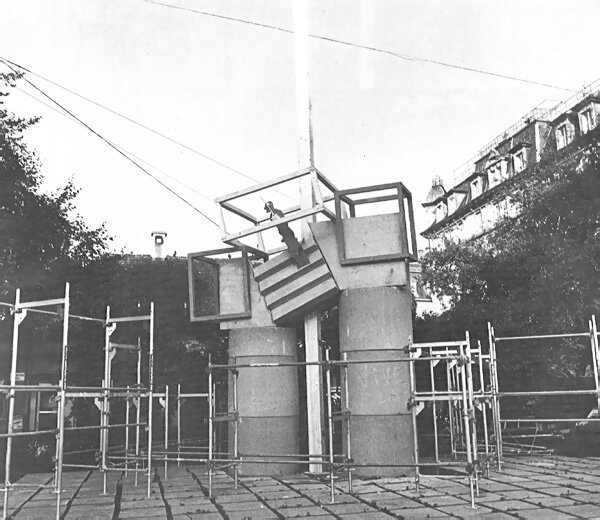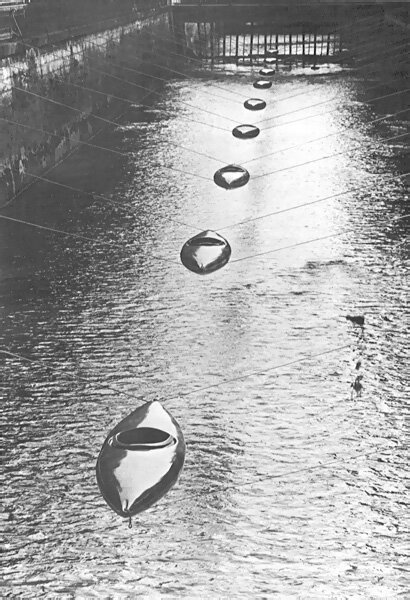8th Swiss Sculpture Exhibition Biel
Alfred H.Wyss: People's Palace
The "Volkshaus" (People's Palace) of Biel – a monumental sculpture of the 1930s
The beginnings
The building society "Volkshaus Biel" was created in the war year of 1917. The intention was for the workers to have a meeting-room, and to provide a reasonably-priced hotel and restaurant. In 1929 the city's voters granted the building lease and a loan to the society for the construction project on Bahnhofstrasse, which was actually built in the period from 1930 to 1932.
Forward-looking municipal policies in Biel at the time resulted in clear and significant commitments to Modernism following an architectural contest in 1925 concerning the new "Bahnhofquartier" (area around the railway station) and the new Volkshaus. At about the same time, new lido and harbour facilities – exemplary for their day – were built. Finally, the city managed to entice General Motors to set up their headquarters in Biel. A city committed to progress embraced future-oriented concepts was willing to transcend local boundaries and embark on new ventures.
Building a bridge to modern, international architecture
Eduard Lanz, the architect, described the "Volkshaus" project as follows:
"It was no common building task. Nor did the architect achieve merely by settling the constructional engineering and architectural requirements and the purpose as such. The noble task was to give form and expression to a focal point for the population at one of the city's most exposed locations. This means not only the formal expression as such, but entailed the personal involvement in the ideals that committed our past generation to fighting for democratic government, and to leading today's and future generations out of the economic and cultural chaos of a planned economy and to true democracy."
"The urbanistic and architectural quality of the building consists in the interpretation of the triangular situation in the vicinity of Bahnhofstrasse – Aarbergstrasse." F. Andry
The Volkshaus Biel constitutes a building whose architecture is of utmost significance – at least in Switzerland. As regards architectural differentiation, the following distinctions can be made:
- the single-storey extension of the "Rotonde" that reaches out toward Guisanplatz;
- the Great Assembly Hall above the ground floor and conference rooms on the upper floors;
- the hotel section with its stairway towering above the halls.
"The refurbishment is intended to salvage the quality of the original architecture. The haphazard renovations of the previous operating period will be reversed; the halls and the restaurant will again be used in a manner similar to that originally intended." F. Andry
"The effect of the building's outward appearance relies entirely on an increase in mass, rising from the low-slung longitudinal wing along Aarbergstrasse to an eight-floor high-rise on Bahnhofplatz (now: Guisanplatz), which ends abruptly in the stairwell tower, and on the stark contrast of its dark clinker hue. The structuring, however, is confined to an emphasis on the distribution and grouping of apertures." Ed. Lanz
This strategy resulted in a structuring that is relevant to "Expressionism" – a significant trend in the context of "New Architecture". It becomes clear that the very architecture itself was conceived of as sculptural. As Le Corbusier had demanded, primary forms should be appreciated and recognised as beautiful, not least for the ease with which they can be interpreted. Light and shadow, wall and space were considered elements of architecture. The objective was a clearly-designed building, a unit consisting of sober elements that produce a generous ensemble.
"A 50-year-old house that resists any attempts to change its spatial organisation, because its original concept is strong, right and resilient. The old rooms can be filled with new content without diminishing the original concept. " F. Andry
From yesterday to tomorrow
When the "Volkshausgenossenschaft" (Volkshaus Cooperative) had to file bankruptcy in 1975, the Municipal Council and the City Parliament of Biel endeavoured to acquire the Volkshaus, which was located on municipal territory, for a price of 1.6 million Swiss francs. However, on the plebiscite weekend of September 24/25, 1977, the voters threw out the credit application.
Following further investigations and pre-project studies, the "Hochbauamt" (Municipal Department of Architecture) proposed moving the Conservatoire of Music. In the plebiscite of October 20-23, 1983, the voters of Biel approved the amount of 8.405 million Swiss francs for the refurbishment and transformation of the Volkshaus and its subsequent use as a conservatoire.
This means that green light has been given for a continued public use of the building, and especially of the Great Hall and smaller rooms – to the benefit not only of the Conservatoire, but also of Biel's social and community life.
"The Music School at the Volkshaus: this commits the school. Farewell to the dreamy seclusion of the Old City – but welcome to the pulsating life of the present day." F. Andry
Uncredited quotations are excerpts from an essay on the Volkshaus written by Alfred H. Wyss, Hochbauamt Biel (Municipal Department of Architecture).
© Translation from German, August 2008: Margret Powell-Joss

